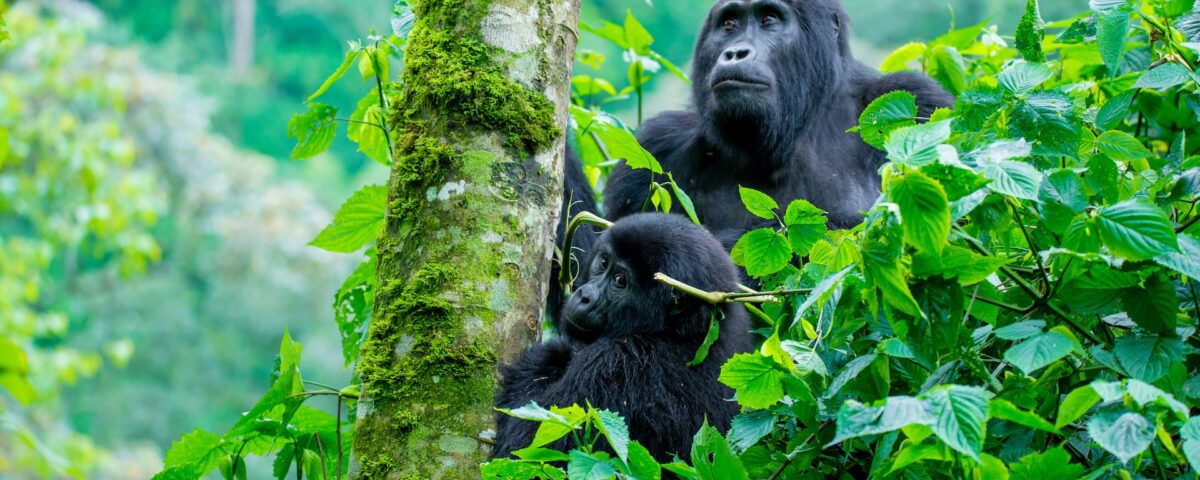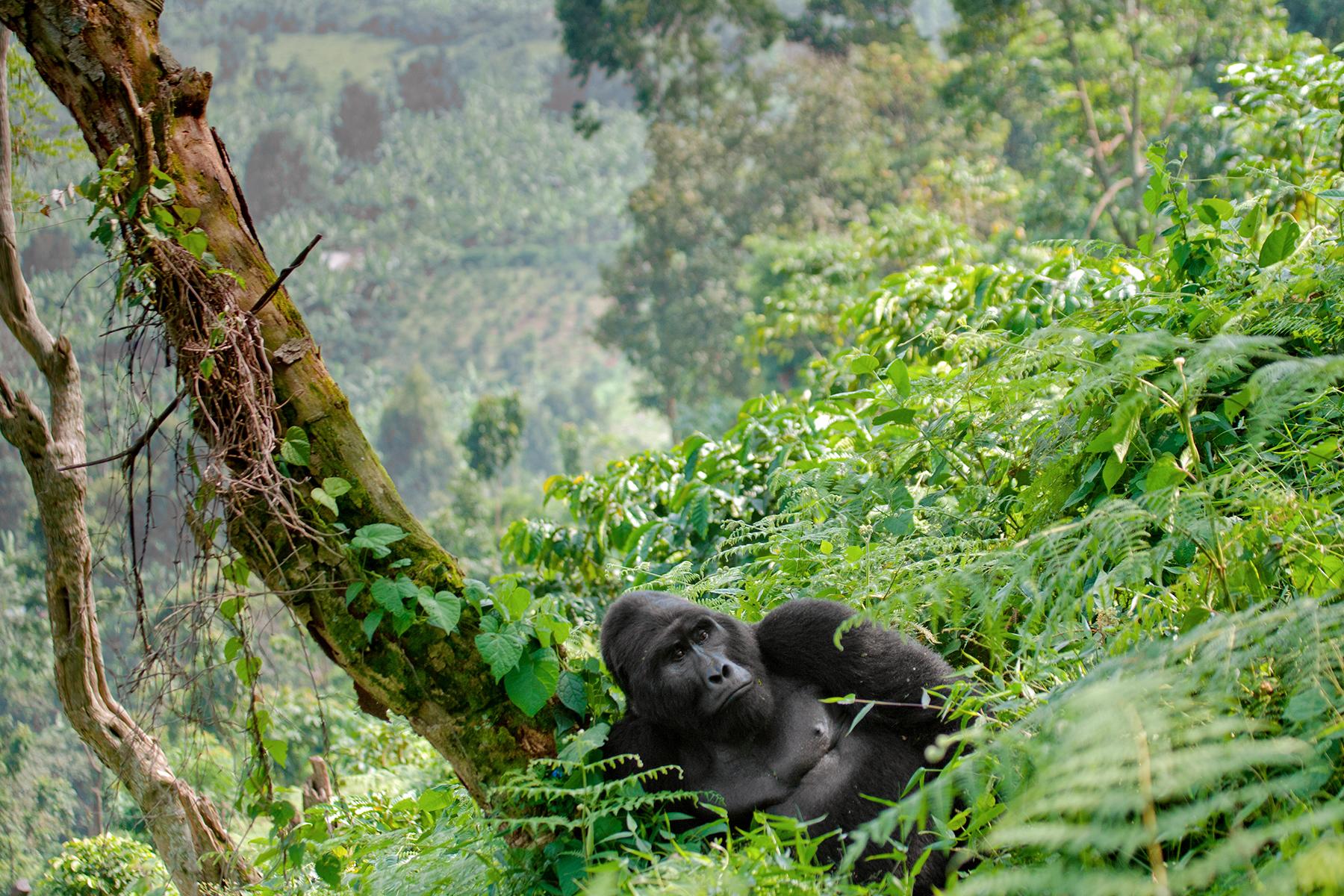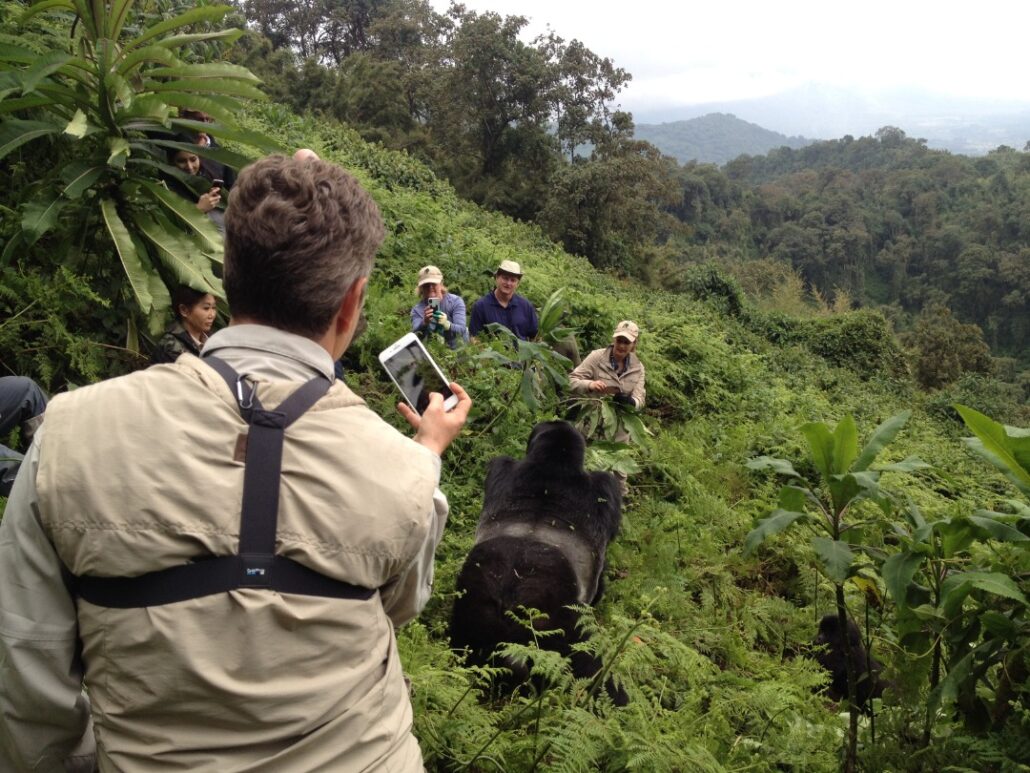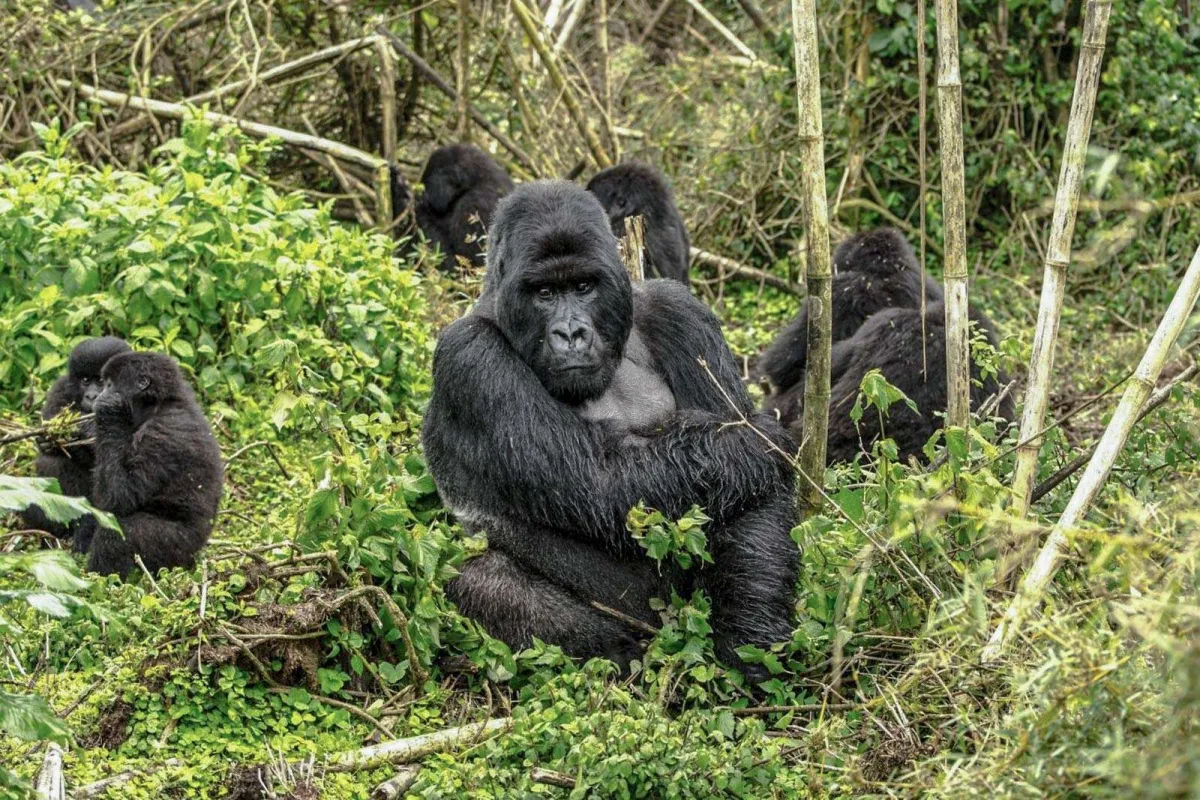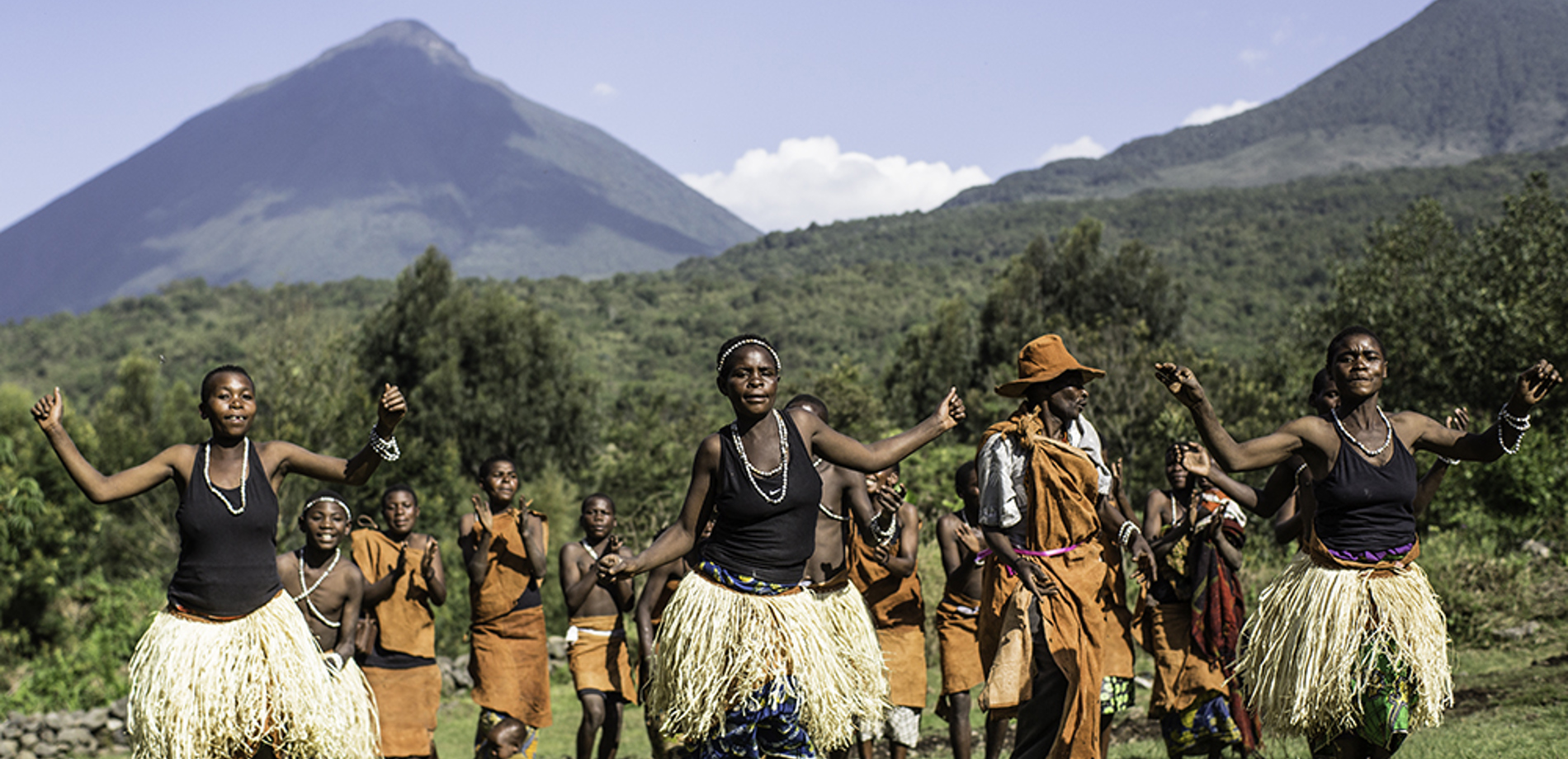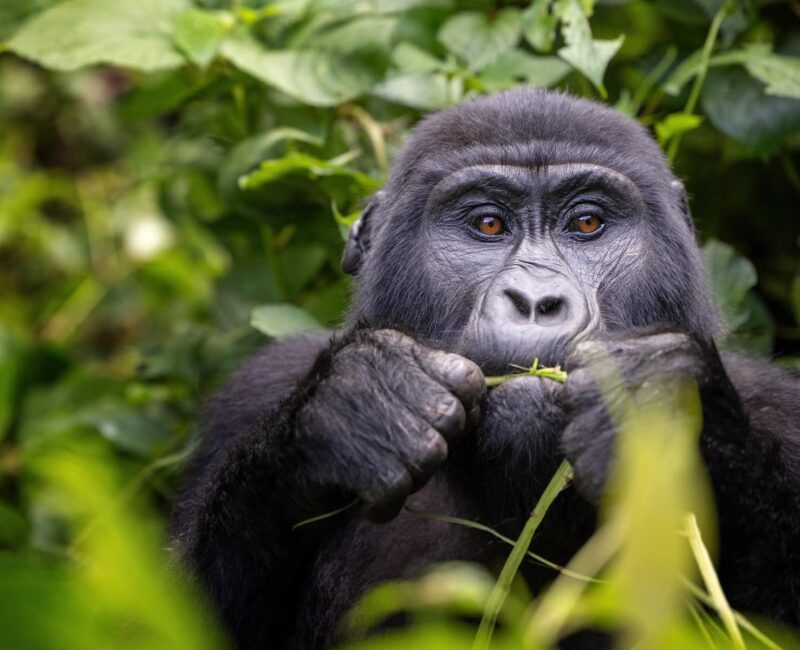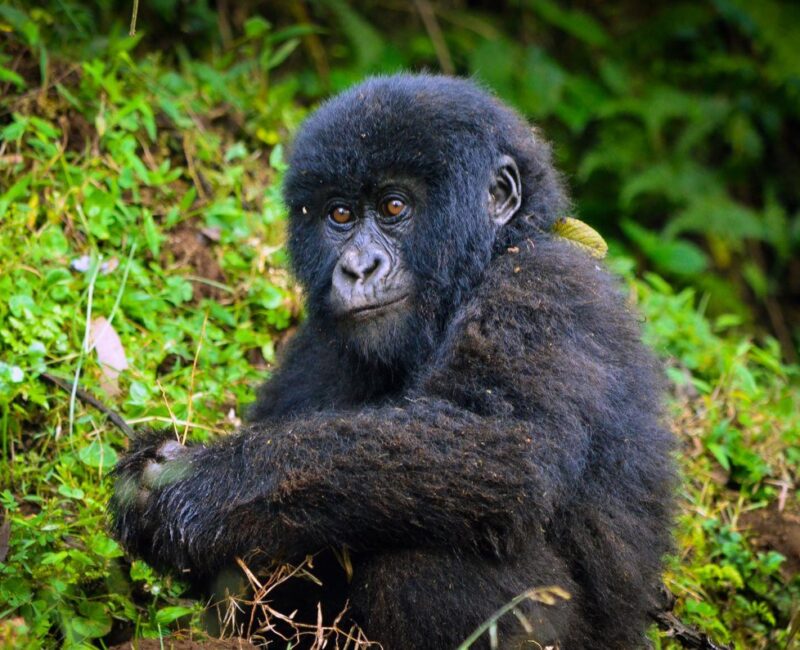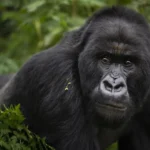
Gorilla Conservation in the Virunga Conservation Area
October 6, 2025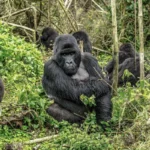
Experience a Day of Gorilla Trekking in Uganda
October 6, 2025Mountain Gorilla Habitat: Exploring Africa’s High-Altitude Wilderness
A Safari Overview into Mountain Gorilla Habitat
Mountain gorilla habitat represents one of the most fascinating and rare environments on Earth, attracting travelers from every corner of the world. Nestled within the Albertine Rift region of East-Central Africa, this habitat supports the survival of the endangered mountain gorillas, a species found nowhere else on the planet.
Travelers embarking on Uganda Gorilla Trekking, immersive Uganda Gorilla Safaris, or broader Uganda Wildlife Safaris experience not only encounters with these magnificent primates but also the wonder of pristine high-altitude forests. The Mountain Gorilla Habitat stretches across volcanic landscapes and dense tropical forests where mist drifts across treetops, creating the perfect setting for unforgettable safari experiences.
A Uganda Safari Holiday into these unique forests provides much more than gorilla encounters. Visitors discover lush vegetation, rare bird species, and fascinating cultural heritage preserved by local communities. Travelers choosing Uganda Tours often combine gorilla trekking with village visits, traditional performances, and conservation-centered lodges. For those asking what makes Uganda Safaris Holidays unique, the answer lies in the intimate connection between wildlife, landscapes, and people who live around the Mountain Gorilla Habitat. This rare balance of biodiversity and culture creates a safari journey that feels authentic, immersive, and deeply meaningful.
Geographic Range of Mountain Gorilla Habitat
The Mountain Gorilla Habitat is restricted to two primary locations within the Albertine Rift: the Virunga Massif and Bwindi Impenetrable National Park. Together, these habitats host the entire global population of mountain gorillas. For travelers considering Uganda Gorilla Safaris, these areas provide exclusive access to the world’s most sought-after wildlife encounters.
The Virunga Massif spans the borders of Rwanda, Uganda, and the Democratic Republic of Congo. This chain of dormant volcanic mountains includes Volcanoes National Park in Rwanda, Mgahinga Gorilla National Park in Uganda, and Virunga National Park in Congo. At elevations ranging from 2,200 to 4,300 meters (7,200–14,100 feet), the environment is dominated by montane forests, bamboo vegetation, and Afro-alpine meadows. Every trek through this Mountain Gorilla Habitat reveals landscapes shaped by volcanic soil and misty weather conditions.
In Uganda, Bwindi Impenetrable National Park represents the second major mountain gorilla stronghold. Unlike the Virunga volcanoes, Bwindi’s terrain is rugged, steep, and covered in dense vegetation. Trekkers exploring Bwindi during Uganda Safaris encounter giant fig trees, ferns, vines, and thick undergrowth that challenge and thrill every step. This makes Bwindi a favorite for adventurous travelers on Uganda Wildlife Tours seeking both excitement and intimacy in their gorilla encounters.
Together, these two ecosystems form the global sanctuary for mountain gorillas. For safari-goers asking why Uganda Holidays focus so strongly on gorillas, the answer lies in the exclusivity of their range. Without the Albertine Rift, the species would not exist in the wild, making every visit a once-in-a-lifetime privilege.
Characteristics of Mountain Gorilla Habitat
The Mountain Gorilla Habitat is a masterpiece of nature’s design, offering the perfect conditions for gorilla survival. These high-altitude forests remain cool, misty, and green throughout the year, providing abundant food sources and shelter. For travelers on Uganda Gorilla Trekking safaris, these environments showcase thick vegetation zones ranging from bamboo forests to hagenia-hypericum woodlands and alpine meadows. Each zone plays a role in supporting gorilla life and enriching the safari experience.
Dense vegetation is one of the defining features of the Mountain Gorilla Habitat. The forest floor is covered in fast-growing plants such as bamboo, wild celery, thistles, and nettles, which form part of the gorilla’s diet. During Uganda Wildlife Safaris, visitors learn how gorillas forage daily, moving slowly through these dense forests to feed on shoots, leaves, and fruits. The thick vegetation also creates natural hiding places, giving trekkers a sense of adventure as they navigate narrow trails.
The altitude of the habitat adds another fascinating dimension. At heights above 2,200 meters, temperatures are often cooler than the surrounding lowlands, making gorilla trekking comfortable for travelers. Mist hangs over the forests, creating dramatic scenery that enhances every safari photograph. These cool conditions are essential for gorilla survival, as they thrive in this unique montane climate.
For travelers asking whether Uganda Safaris Holidays offer more than wildlife, the answer is yes. Exploring the Mountain Gorilla Habitat reveals unique landscapes that are as captivating as the gorillas themselves. The misty forests, volcanic slopes, and cool breezes create an unforgettable safari environment where conservation, adventure, and scenery merge seamlessly.
The Virunga Massif: Home of Volcanoes and Gorillas
The Virunga Massif stands as one of the most celebrated regions of the Mountain Gorilla Habitat. This volcanic range stretches across three countries, each offering unique safari opportunities. Visitors choosing Uganda Gorilla Safaris within Mgahinga Gorilla National Park enjoy trekking the Nyakagezi family, a group known for its accessibility and playful interactions. Mgahinga also allows trekkers to hike dormant volcanoes like Mount Sabinyo or explore golden monkey habitats, adding depth to a Uganda Safari Holiday.
Across the border in Rwanda, Volcanoes National Park offers well-established gorilla trekking programs, luxurious safari lodges, and cultural encounters with local communities. This park attracts international travelers seeking shorter itineraries combined with premium safari services. However, Uganda remains more affordable, making Uganda Gorilla Trekking an attractive option for budget-conscious adventurers seeking value and authenticity.
On the Congo side, Virunga National Park delivers the rawest safari experience. This section of the Mountain Gorilla Habitat combines gorilla trekking with opportunities to hike Mount Nyiragongo, a volcano famous for its lava lake. Travelers combining Uganda Wildlife Tours with Virunga excursions experience the most diverse range of landscapes and adventure activities within the gorilla range.
What makes the Virunga Massif particularly fascinating is its ecological diversity. Beyond gorillas, the habitat shelters golden monkeys, forest elephants, and hundreds of bird species. Safari-goers on Uganda Safaris often combine gorilla trekking with birding, volcano hikes, and cultural village visits, creating well-rounded itineraries. Every journey through the Virunga Massif feels like stepping into the heartbeat of Africa’s wilderness.
Bwindi Impenetrable National Park: The Jewel of Uganda
Bwindi Impenetrable National Park represents a completely different side of the Mountain Gorilla Habitat. This UNESCO World Heritage Site is located in southwestern Uganda, near the DRC border, and is home to roughly half of the world’s mountain gorilla population. For many travelers on Uganda Safaris Holidays, Bwindi is the ultimate gorilla trekking destination.
Unlike the volcanic slopes of the Virunga Massif, Bwindi features rugged, steep terrain covered in dense tropical rainforest. Trekkers navigating Bwindi encounter thick vegetation that makes tracking gorillas both challenging and rewarding. The forests are ancient, dating back over 25,000 years, making Bwindi one of the richest ecosystems in Africa. During Uganda Gorilla Trekking, visitors not only meet gorillas but also spot forest antelopes, bush pigs, and colorful butterflies.
Cultural experiences enrich every safari in Bwindi. Many lodges organize visits to local communities where travelers can engage with the Batwa, Uganda’s indigenous forest people. Storytelling, traditional dances, and guided forest walks showcase how humans and gorillas share a deep history with the land. For those asking whether a Uganda Safari Holiday provides cultural depth, Bwindi delivers an answer that blends nature with heritage.
Bwindi also offers varied trekking sectors, including Buhoma, Rushaga, Ruhija, and Nkuringo. Each sector provides unique gorilla groups, scenic trails, and accommodation choices ranging from luxury lodges to community guesthouses. Safari-goers on Uganda Wildlife Safaris can tailor their Bwindi experiences to match comfort, adventure, and cultural immersion. Every trek becomes a personal journey into one of the world’s most captivating habitats.
Cultural Experiences Around Mountain Gorilla Habitats
A journey into the Mountain Gorilla Habitat extends far beyond trekking. Around Bwindi, Mgahinga, and Volcanoes National Parks, cultural programs invite travelers to connect with the people who live alongside gorillas. These encounters make Uganda Safaris memorable by combining conservation with community tourism.
One highlight is visiting the Batwa people, who once lived as forest dwellers in Uganda’s gorilla habitats. During Uganda Gorilla Safaris, guests can take part in Batwa cultural trails where elders demonstrate fire-making, traditional hunting techniques, and forest songs. This cultural immersion allows visitors to appreciate how conservation has reshaped lives while preserving traditions.
Local markets, homestay visits, and craft-making demonstrations also enrich the safari journey. Many lodges incorporate cultural performances, showcasing Ugandan music and dance, into evening programs. For those asking whether Uganda Tours can combine wildlife and cultural experiences, the Mountain Gorilla Habitat provides the perfect setting.
By choosing eco-lodges and cultural excursions, travelers on Uganda Safaris Holidays directly support communities, ensuring conservation benefits reach beyond park boundaries. The integration of culture and nature strengthens the safari experience, offering travelers deeper meaning while sustaining both gorillas and people.
Why Mountain Gorilla Habitat Matters for Travelers
The Mountain Gorilla Habitat is more than just a home for endangered primates; it is a living ecosystem that defines the success of African conservation. Every traveler choosing Uganda Gorilla Trekking, Uganda Gorilla Safaris, or extended Uganda Wildlife Tours contributes to the preservation of this rare environment. The Albertine Rift remains the only place on Earth where these gorillas exist, making every safari a once-in-a-lifetime journey.
For adventurers seeking authentic travel, a Uganda Safari Holiday in these habitats offers far more than wildlife encounters. It provides opportunities for cultural exchange, ecological learning, and personal transformation. Travelers return home with not only memories of gorilla encounters but also stories of conservation success and cultural discovery.
As the world embraces responsible travel, the Mountain Gorilla Habitat stands as a global symbol of sustainability. Travelers who choose Uganda Safaris Holidays step into a destination where tourism protects wildlife, empowers communities, and safeguards one of the planet’s most extraordinary ecosystems. This is more than a safari; it is a journey into the heart of Africa’s natural heritage.

